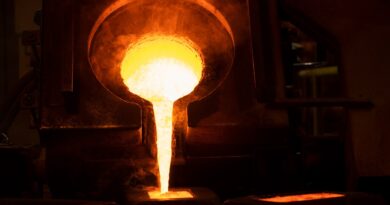Gold production at Harmony higher than anticipated
On 27 March 2020, South Africa was placed under national lockdown, to curb the spread of the Coronavirus. All of Harmony’s underground operations were placed on care and maintenance, with the surface operations permitted to continue working at close to 100% capacity.
On 1 May 2020, South African underground operations were granted concessions to start producing at a maximum capacity of 50% and as of 1 June 2020, operational restrictions were lifted further to allow the mining industry to operate at 100% capacity.
Return to work has progressed smoothly albeit slowly, with the return of foreign nationals to South Africa taking longer than anticipated. Harmony has approximately 5 500 migrant workers that went to their respective countries during lockdown and while they have started returning, Harmony will only return to pre-lockdown production levels towards the end of August 2020.
Despite the disruption of COVID-19, the South African operations managed to achieve up to 75% of planned production during the last quarter of the financial year, which was higher than initially expected by Harmony.
However, year on year, total annual gold production was 15% lower at 37 863kg, or 1.2Moz, mainly due to the impact of the COVID-19 national lockdown and phased recovery in South Africa.
Year on year, the average underground recovered grade of the South African assets was 2.5% lower at 5.45g/t (FY19: 5.59/t), mainly due to the impact of ongoing remedial actions to address geological challenges and seismicity at Kusasalethu, while surface operations posted a 3.9% improvement in grade to 0.267g/t. As Hidden Valley in Papua New Guinea transitions from Stage 5 to Stage 6, recovered grade decreased to 1.25g/t at year end from 1.60g/t in financial year 2019 (“FY19”).
Due to lower production year on year, the all-in sustaining costs for all operations is expected to be between 17% to 19% higher at about R645 000/kg to R655 000/kg (FY19: R550 005/kg). In US dollar terms, all-in sustaining costs is expected to only increase by between 6% to 8% from US$1 280/oz to US$1 300/oz (FY19: US$1 207) as the Company benefitted from a weaker average Rand exchange rate against the US dollar in FY20.
Gold prices have rallied to an all-time high following the global economic fallout of COVID-19 and ongoing geopolitical uncertainty supporting its safe haven status with investors. The average gold price received for the FY20 was 25% higher at R735 569/kg than in FY19 (R586 653/kg) (in dollar terms, the gold price increased by 14% from US$1 287/oz to US$1 461/oz), resulting in strong operating cash flows year on year.
It is estimated that the operating free cash flow margin for FY20 may double – from 7% in the previous financial year to about 13% to 15% in FY20.
Of the close to 4% of the Company’s employees who have contracted COVID-19, 80% has already recovered. “We wish those who have been infected a speedy recovery. We mourn the loss of 20 of our colleagues who lost their battle against the pandemic and urge those who have not been infected to remain vigilant as we brave the storm,” said Peter Steenkamp, chief executive officer of Harmony.




